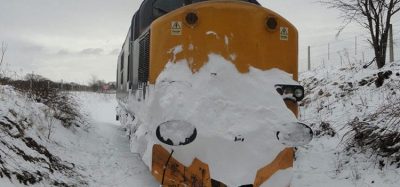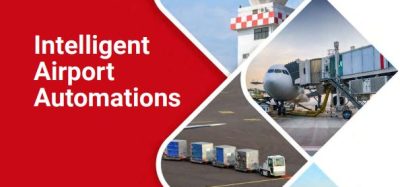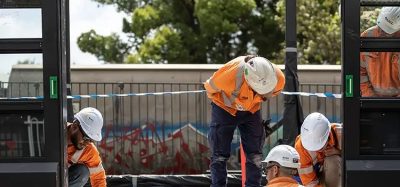Setting rolling stock technical and safety standards
Posted: 1 August 2008 | | No comments yet
Fire safety and risk assessment of rolling stock is an important aspect of our industry. To gauge an understanding of what requirements are involved and to assess what the future holds, we put four questions to the train operating company First Capital Connect, and to the notified body and railway engineering consultancy Lloyd’s Register Verification Limited.
Fire safety and risk assessment of rolling stock is an important aspect of our industry. To gauge an understanding of what requirements are involved and to assess what the future holds, we put four questions to the train operating company First Capital Connect, and to the notified body and railway engineering consultancy Lloyd’s Register Verification Limited.
Fire safety and risk assessment of rolling stock is an important aspect of our industry. To gauge an understanding of what requirements are involved and to assess what the future holds, we put four questions to the train operating company First Capital Connect, and to the notified body and railway engineering consultancy Lloyd’s Register Verification Limited.
Participants:
Darren James
Head of Technical Engineering, First Capital Connect
Stephen Gaskill
Technical Manager – Rail Directive, Lloyd’s Register Verification Limited
Question 1: What regulations and requirements are there to achieve the highest level of safety on rolling stock?
James: Principle to the regulations and requirements is for the Operators to have a robust “Safety Management System”, which in turns creates the foundation and priority of addressing what is required, by the spectrum of regulations, codes of practice, the law and our own business requirements.
Gaskill: There are three levels of requirements governing safety of Rolling Stock:
- European Requirements
- Interoperability Directives which set out Technical Specifications that address essential requirements for safety.
- Railway Safety Directive requirements through provisions set out in the Operators Safety Management System to Manage Engineering Change.
- National Requirements
- Notified National Technical Rules that address open points in Interoperability Specifications and National Safety Rules.
- Other National Standards that address safety issues that are not related to interoperability.
- Route Specific Requirements
Until we have a fully interoperable railway, there will be a need to address the compatibility of new rolling stock with existing non-interoperable infrastructure and other rail vehicles.
These requirements are supplemented by other standards and good practice, such as those set by the UIC, that may be called up through one, or more, of the above requirements.
However, compliance with standards alone cannot be assumed to achieve the highest level of safety. To achieve this, the risks need to be assessed as acceptable, for example, demonstrably managed to be as low as practicable as part of a more flexible review using competent experts. Standards such as EN50129 and Rail Engineering Safety Management (known as the “Yellow Book”), set out techniques for safety engineering and Engineering Safety Cases.
Question 2: How do you see the development of rolling stock safety in tomorrow’s transport network?
James: Safety Developments have to be the product of our combined knowledge of how our railway integrates. The Design, Build and Maintain plan needs to include Operate as well. The feedback and flow of the experience and increased knowledge at each stage and interfaces with infrastructure and the environment, in turn needs to be driving appropriate development.
The trend to design for build, and not maintenance, suggests to me that our future railway will inevitably design out much of the transparency of “cause”, and in doing so create silos of specialists, separated by a commercial arrangement.
However the synergy of approach in the design of our future T&RS, and the experience of operating rolling stock may be combined through the removal of commercial barriers, enabling appropriate “functional modeling” of new trains.
Gaskill: If specifications are developed to address railway safety comprehensively and the whole of the railway meets those standards, then rolling stock safety could rely on adherence to those standards to achieve a tolerable level of safety.
However, railways have long asset lifecycles – it would be many decades before this could be achieved, even if all of the standards were up to date now. It is arguable that this situation will never exist because technical developments will always push the boundaries of standards in order to make advances.
In future there could be a move towards reliance on technical standards to set safety standards, but it seems likely that there will remain a requirement for an additional review to achieve the highest levels of safety that are affordable.
We are already seeing great interest in a move towards lighter, more efficient trains. These have a safety benefit in having a lower kinetic energy for a given speed. These trains may have more effective energy absorption to improve crashworthiness and have interiors with enhanced safety features. Developments will also include the widespread application of the European Train Control System (ETCS) as part of the European Railway Traffic Management Systems (ERTMS) which is already mandated under European legislation.
Question 3: How often are the regulations and requirements analysed and updated and what do you look for to improve safety?
James: All external changes are reviewed for their impact on our operation.
New regulations are treated as a risk or potential non conformance until we have fully understood the requirements and integrated them into our system.
Gaskill: In terms of European Specifications, they are reviewed every few years. However, the process to agree change is very slow and it is often not practicable to alter existing rolling stock to comply with the latest standards. In recent years there have been several Directives affecting railways and these are taking time to digest and implement.
To improve safety, a full analysis of where the improvement effort should be placed can only take place when there is accurate and consistent statistical information available on which to base any analysis. The European Railway Agency is tasked with setting Common Safety Definitions, Common, Safety Measures and Common Safety Indicators. The latter will enable data to be available across Europe and help target safety enhancements. On most railways it is clear that the road-rail interface needs addressing urgently, particularly at level crossings which probably represent the most significant single cause of risk on the railway system.
Question 4: How do you work with the suppliers to assist with improving rolling stock safety?
James: The spectrum of suppliers is vast, however in principle, we aspire to saying what it is we want rather than getting what they think we should have. More specifically regarding those items that we have concern as to the products ability to import safety risk, it is important to describe those risks and how the supply chain affects the risks.
Gaskill: The Lloyd’s Register Group comprises charities and non-charitable companies, with the latter supporting the charities in their main goal of enhancing the safety of life and property, at sea, on land and in the air – for the benefit of the public and the environment.
I work for a notified body and railway engineering consultancy in the Lloyd’s Register Group. We work with suppliers and railway administrations to advise on safety requirements and safety engineering. We also provide independent safety assessment and certification of railway products; providing an overall independent assurance package to guide suppliers through the maze of regulations and approvals requirements. Our aim is to support suppliers and operators as they progress towards their goals – getting new and modernised rolling stock and infrastructure into service with improved levels of safety in place. The use of a robust independent assurance approach makes a positive contribution to the efficient achievement of those goals.






